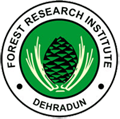
Chandigarh Forest Flora
A Comprehensive Database of Ligneous Plants of Chandigarh (India)
Designed & Developed by Bioinformatics Centre, Forest Research Institute, Dehradun



| Family: Menispermaceae | Genus: Cissampelos | Species: Cissampelos pareira Linn. |
Habit |
Leaf |
Flower |
Fruit |
Bark |
| Synonym | Cissampelos cordifolia Bojer, Cissampelos discolor DC., Cissampelos heterophylla DC., Cissampelos orbiculata (L.) DC., Cissampelos tomentosa DC. | Flower Color | Greenish |
| Common Name | Abuta, Batindu, Barbasco | Flower Type | Cyme |
| English / Trade Name | False pareira root | Flowering Period | April-June |
| Vernacular /Local Name | Patat Ki Bel, Jaljamini | Fruiting Period | July-Sept |
| Altitude | Upto 2000 m | Fruit Type | Drupe |
| Habit | Climber | Fruit Details | Drupe, obovoid, scarlet, endocarp curved. |
| Habitat | Growing in open, disturbed habitats | Bark Type | Smooth |
| Distribution | India, Sri Lanka and other countries in the Asian subcontinent | Bark Details | The bark is grayish-brown, wrinkled lengthwise, with ring-like elevations, interior yellowish-gray, porous, woody, coarsely fibrous |
| Distribution in chandigarh | Sukhna Wildlife Sanctuary, Chandigarh Botanical Garden and Nature Park, Rock garden, Patiala-ki-Rao Reserved Forest, Sukhna Choe Reserve Forest & Sukhna Lake , Sector 6, Sector 18, Sector 48 | Origin | Native |
| Leaf Type | Simple | ||
| Leaf Arrangement | Alternate (leaves born singly along stem) | ||
| Leaf Shape | Cordate | ||
| Description of Species | Climbing shrubs, thicket forming also dextrose climbers which grow annually from perennial rootstocks. Leaves simple, alternate, orbicular or reniform, peltate, 3-11 × 3.5-12 cm across, base cordate, margin ciliate, entire, apex acuminate or obtuse with mucronate tip. Petiole usually as long or longer the leaf lamina, tomentose or glabrate, about 3-12 cm long. Inflorescences pendulous, sub corymbose cymes, pubescent, up to 6 cm long. Male flowers in cymose, green to yellow. Sepals 4-6, pilose above, free. Petals 4, connate into a cup, greenish, puberulous outside.Stamens 4, synandrium peltate, filaments connate into a column, anthers 4 on top. Female flowers racemed and crowded in the axils of leaf-like, ovate-orbicular, persistent, bracts. Sepals 1, obovate; Petal 0-1, obovate, base cuneate; ovary pilose; style glabrous; stigma trifid, carpels 1, Fruit drupes obovoid, red when ripe, aobut 4-8 ×2.5-4 mm across, style scar subbasal, curved endocarp horse shoe shaped, with 9-11 transverse ridges | Leaf Details | Leaves simple, alternate, orbicular or reniform, peltate, 3-11 × 3.5-12 cm across, base cordate, margin ciliate, entire, apex acuminate or obtuse with mucronate tip. Petiole usually as long or longer the leaf lamina, tomentose or glabrate, about 3-12 cm long |
All rights reserved by Forest Research Institute, Dehradun